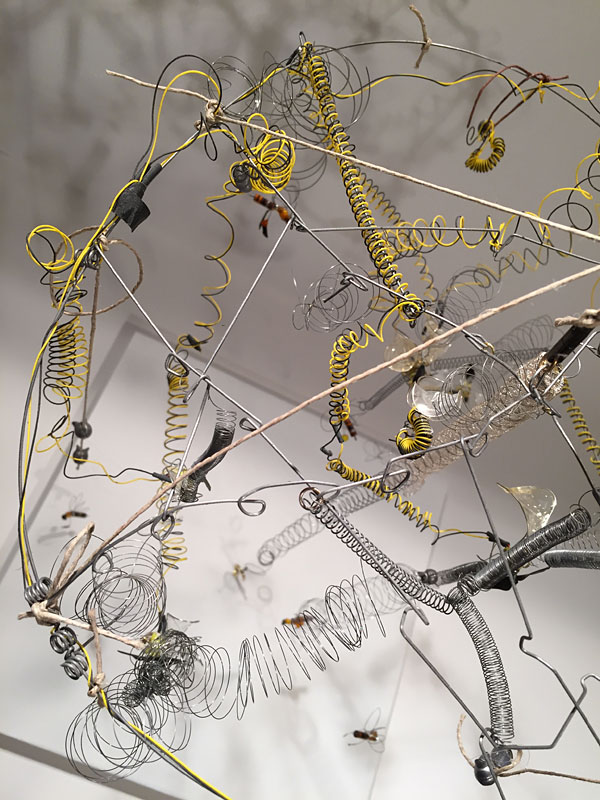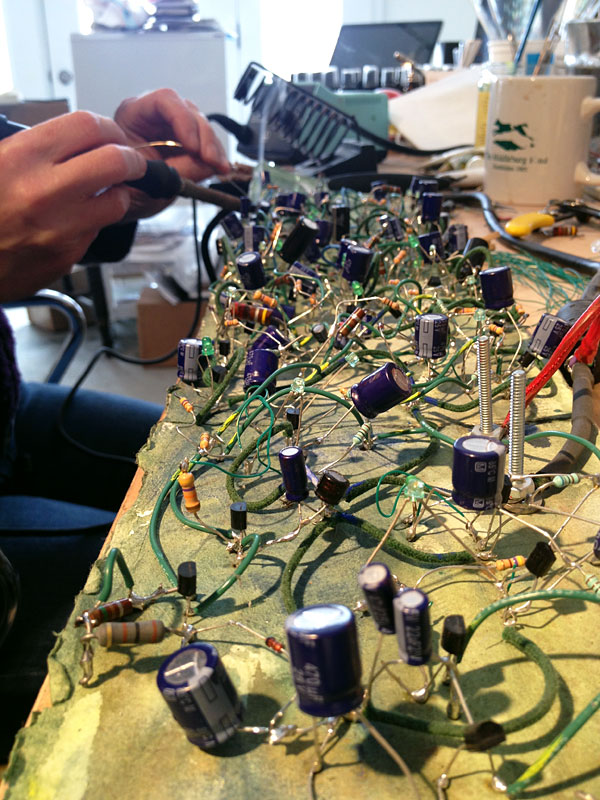Bees will be flying as part of "Pollination," my upcoming solo show at Ronald Feldman Fine Arts, opening September 12th and on view through October 17. Please check back for more images of works-in-progress as the bees and I get ready for our big show.
Kinetic Study of Bees, 2014. Small pager motors and an analog motion detector control the movement of this sculpture as though a swarm of bees. Other materials include a custom control circuit, homemade springs, electrical wire, fishing swivels, tape and string.






















































